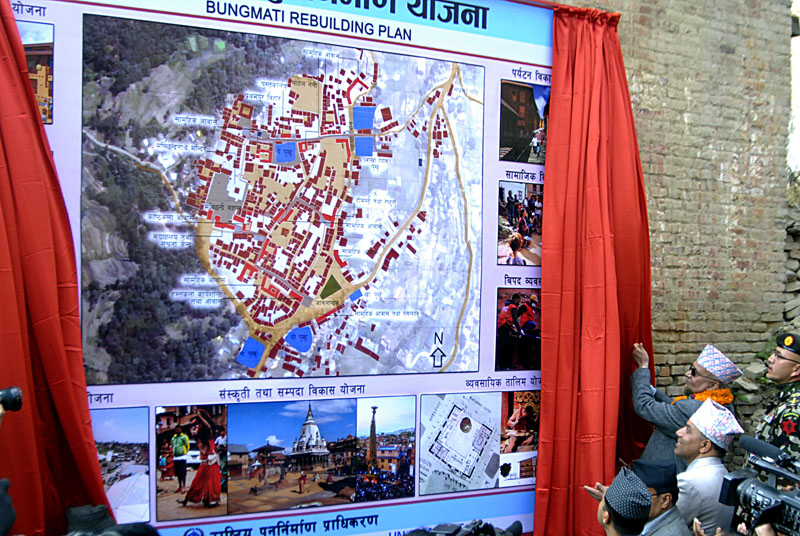Destruction from previous temblors remembered
Kathmandu, January 16
The 18th National Earthquake Safety Day was marked today by organising various programmes to commemorate the devastating earthquake that had caused huge loss of lives and properties on January 16, 1934.
This year, the day was linked in retrospect to the April 25, 2015 earthquake of 7.6 magnitude and subsequent aftershocks that claimed nearly 9,000 lives and caused damage to property worth over Rs 6 billion nationwide.
The day was observed with the theme ‘Earthquake-resistant buildings and structures for resilient Nepal’ with the slogan “Let’s unite for ‘Build Back Safer’ in reference to the infrastructure damage that resulted from last year’s quake.
In addition to President Bidhya Devi Bhandari and Prime Minister KP Sharma Oli launching the National Reconstruction Mega Campaign in Kathmandu and Lalitpur respectively, the government, in association with various national and international non-governmental organisations organised an earthquake memorial meeting at Bhugol Park to mark the day.
Home Minister Shakti Bahadur Basent was chief guest at the memorial meeting where he stressed that people should be aware of disastrous earthquakes, like the one in 1934 and 2015, and should spread the awareness to save themselves as well as others and said the government was committed to building back better and making communities resilient.
Nepal is ranked 20th on the Asian Disaster Reduction Centre’s list of most multi-hazard-prone countries. The country has recorded as many as 423 aftershocks following the April 25 earthquake and five fresh tremors in 2016 alone, according to National Seismological Centre. This shows how vulnerable Nepal is to earthquakes.
Officials said Kathmandu Valley falls in an earthquake-prone zone due to unplanned urbanisation and constructions that lack retrofitting as advised by experts.
Despite the provision of National Building Code and scientific construction systems, most house owners have not followed the NBC, which is more likely to increase the devastation rate during a major earthquake.
NESD is being celebrated in Nepal since 1999 to spread awareness of earthquake safety methods after the country was crippled in the 1934 earthquake.
The 1934 earthquake of 8.1 magnitude had killed more than 9,000 people and damaged more than 200,000 buildings.
With the main objective of contributing to the making of earthquake resilient Nepali communities, the NESD will be observed in all district headquarters, municipalities and various locations of earthquake affected urban and rural areas with various programmes till January 20, said officials.
According to National Society for Earthquake Technology Nepal, this is as occasion to renew national commitment to make efforts to save lives from future earthquakes, build on the lessons learned from losses caused in past earthquakes/disasters and also to pay tributes to all those who lost their lives in 1934 Nepal-Bihar Earthquake,the recent earthquakes and in all past earthquakes that have hit Nepal.






